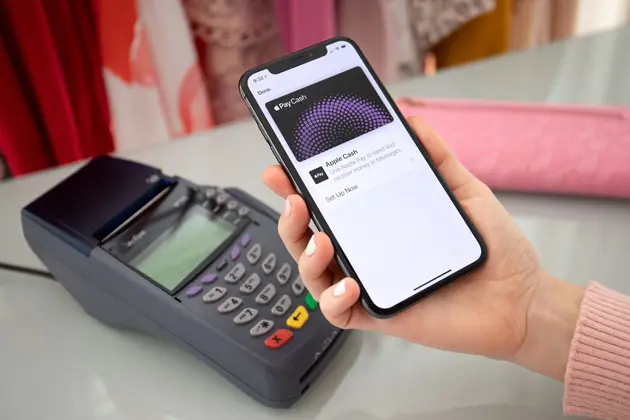Currently, most businesses and fintech firms provide a secure and convenient alternative to conventional payment methods in accordance with the consumer transition towards rapid, seamless transactions. This not only streamlines the checkout process but also establishes a benchmark for future advancements in financial management and interaction in an increasingly interconnected society.
Payment methods have undergone significant transformations in the rapidly evolving digital landscape. Advancements in mobile technology have rendered mobile payment solutions a fundamental component of everyday living. Apple Pay has become a predominant option among these alternatives, transforming the manner in which individuals execute transactions.
Let us examine Apple Pay’s function in business, its market impact, and its prospective developments.
What is Apple Pay?
Apple Pay, launched in 2014, is a mobile payment and digital wallet service created by Apple Inc. Users may execute transactions utilizing compatible Apple devices, including iPhones, Mac desktops, iPads, and Apple Watches. By employing NFC (near-field communication) technology, users can securely execute contactless payments at point-of-sale terminals, online, and within applications.
Apple Pay stores encrypted credit card data on the device’s Secure Element, eliminating the necessity to transmit card information to merchants during purchases. This security feature has fostered consumer trust and facilitated adoption.
Contactless Payment Takeover
Mobile payments have significantly evolved since their inception. Initially, they were restricted to SMS-based transactions, which were neither effective nor well embraced. Nonetheless, smartphones’ proliferation and advancements in NFC technology have rendered mobile payments progressively more prevalent.
Apple Pay: Leading the Pack
Apple Pay distinguishes itself in the mobile payment sector due to its straightforwardness and user-friendliness. In contrast to conventional payment systems that typically necessitate numerous steps and the disclosure of confidential data, Apple Pay facilitates rapid and secure transactions. Its seamless integration with the Apple ecosystem has facilitated customer payments for services and goods, both in-store and online.
Furthermore, Apple Pay’s emphasis on security distinguishes it significantly from its competitors. Apple Pay employs tokenization, a technology that substitutes delicate payment details with a unique identifier (or token), thereby guaranteeing that your financial data remains undisclosed to retailers. This, in conjunction with biometric authentication technologies such as Face ID and Touch ID, offers an additional layer of security that conventional payment methods cannot rival.
The World’s No.1 Contactless Payment Method
Although Apple Pay was first introduced in the United States, the service rapidly expanded to many countries globally. Apple Pay is currently accessible in more than 60 countries and is broadening its global presence.
The global expansion has been essential in enhancing digital payment adoption in regions where cash transactions remain prevalent. Apple Pay has facilitated the transition to a cashless society, enhancing financial inclusion and promoting economic growth with a seamless and secure payment system.
Effects on Businesses and Retailers
Heightened Utilization of Contactless Payments: Apple Pay has expedited the implementation of contactless payment terminals among retailers around the globe. Enterprises that adopt Apple Pay experience expedited transaction processing, diminished checkout durations, and enhanced consumer satisfaction.
Growth of Mobile and Digital Commerce: The ease of Apple Pay has propelled the expansion of mobile and digital commerce, as an increasing number of people choose to shop online and within applications using their Apple devices. This trend highlights the significance of fluid payment experiences in enhancing sales and consumer loyalty.
Opportunities in Integration: Integrating Apple Pay necessitates investment in NFC-enabled terminals and adherence to security standards; yet, businesses may access a technologically adept customer demographic that appreciates innovative payment methods. Improved data security and diminished fraud threats further facilitate long-term operational efficiencies.
Business Example: Apple Pay in the Casino Industry
Since its inception, Apple Pay has garnered considerable adoption across various industries. However, its arrival in the online casino sector has been huge, and many popular casinos that accept Apple Pay have experienced a rise in patrons eager to benefit from this payment method’s simplicity. Apple Pay mitigates the challenges related to deposits and withdrawals, enabling gamers to focus on what is paramount: gaming.
Apple Pay revolutionizes player involvement in online casinos and even land-based counterparts due to the integration of security, speed, and mobile accessibility, providing an optimal experience for gamers, not to mention that the absence of fees makes it a financially prudent decision. The increasing popularity of Apple Pay among casino goers, along with its simplicity and the trust it engenders, will continue to enhance the business. Whether a veteran or a novice in online gaming, Apple Pay undeniably provides one of the most innovative payment methods available, which is difficult to overlook.
Apple Pay’s Influence on Consumer Behavior
Apple Pay has profoundly impacted customer behavior, altering perceptions of money and transactions. The ease of utilizing smartphones or smartwatches for payments has increased contactless transactions, especially in retail settings. Recent figures indicate a consistent rise in the usage of Apple Pay, with millions of customers globally utilizing the service for routine transactions.
The transition to digital payments has impacted consumer financial management. Apple Pay, equipped with transaction tracking and budgeting tools, facilitates users’ monitoring of their expenditures, hence enhancing the advantages of digital wallets.
Apple Pay and Its Continued Evolution
Technological innovations will dictate the future of Apple Pay. The platform is poised to assume a more significant role in the financial services sector due to the following trends and advancements:
Apple Pay Integration: The integration of Apple Pay with devices like the Apple Watch is anticipated to become more significant as wearable technology becomes more widely adopted. Wearable payments provide contactless transactions independent of a physical smartphone, greatly enhancing the user experience.
- Augmented Biometric Authentication: Apple’s biometric authentication systems are constantly advancing. The security features of Apple Pay are expected to be significantly enhanced with the introduction of advanced biometric technologies, including under-display fingerprint sensors and more powerful facial recognition systems.
- Expansion into New Territories: Apple Pay is expected to broaden its reach, especially in regions with significant mobile payment adoption. The platform’s introduction to emerging countries may accelerate the region’s shift to digital payments.
- Integration with Cryptocurrencies and Web3: Apple has been closely monitoring the growing prominence of Web3 and cryptocurrency. Although Apple Pay currently lacks direct support for cryptocurrencies, there is conjecture that the company may consider including digital assets in the future.
The Future of Apple Pay & Contactless Payments
Apple Pay has been instrumental in the progression of contactless payments, providing consumers and companies with a safe, simple, and fast payment method. As contactless payments advance, propelled by technology breakthroughs and shifting customer expectations, Apple Pay continues to revolutionize in-store, online, and mobile transaction methods.
By adopting contactless technologies and digital wallets, businesses may meet the demands of tech-savvy consumers, improve operational efficiency, and leverage the growth potential offered by the increasingly digital economy.
As Apple Pay persists in its innovation and expansion, its impact on the payment landscape is poised to remain, influencing the future of digital commerce and contactless payments for years ahead.










